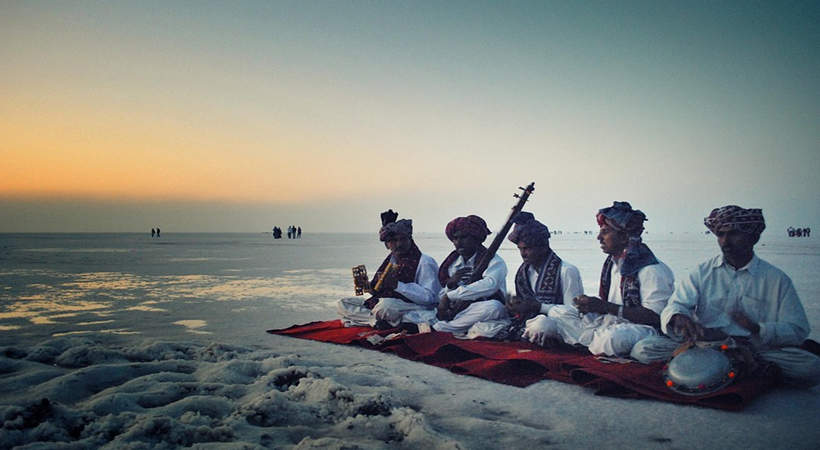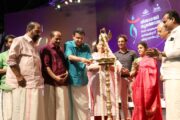Resilience and The Rann of Kutch

The Rann of Kutch, the doorway to western India, can look surreal at times. On a full moon night, these white sands of Kutch light up with its austere beauty, contrasted colourfully by the people. ‘Breathe in a bit of Kutch, come breath in a bit of Gujarat’ – is what its tourism campaign says and there is plenty to breathe in and assimilate.
The Rann of Kutch is a salt march in the Thar desert in the Kutch district of Gujarat, which is one of the largest salt deserts in the world. It is designated as a World Heritage Site.
The people of Kutch are resilient, as every year, they go through a lot of challenges and everyone will remember the 2001 earthquake that devastated Bhuj. But how the people in that area have come back shows their resilience and optimism.
The whole area of Bhuj is ecologically rich and the wildlife conservation areas around Kutch are not something to be missed. The Kutch desert wildlife sanctuary, the grasslands and most of all the salt marshes of Kutch are must-see attractions.
The Sanskrit name Kutch translates into tortoise and just like the turtle is called The Old Man, Kutch is also an old piece of land. The tortoise is known for its wisdom. It has no predators and it is therefore a symbol of peace.
Kutch has mirages, shallow wet marshes, thick marshes and flamingos. It harbours a gateway to the mysterious Indus Valley Civilization. The sea and salt become the nurturing root of the idea of Kutch. So, whether we see the salt in the Rann of Kutch or whether we go to the ocean or the grassland or the mangroves, there is a dominance of the ocean ecology.
Kutch was a natural corridor to and from Sindh before 1947. Its maritime history shows connections with Africa. It being the salt desert added to its charm. The salt is very important here as it bears the very intrinsic idea of being a Kutchia. You have the salt farmers, but you also have in the mangroves a particular kind of camels who drink the salt water for their survival. About 3/4 of the salt in India comes from the salt pans of the Rann of Kutch.
Then there are boatmen who belong to the specific community called Karva. They bathe in the salt water and there is a certain strength to them. Yet they eat just dokhlas, bread, onion and green chillies. They are resilient people.
The Kutch capital is called Bhuj and is named after the city deity, a serpent called Bhujanga. There is an interesting story that goes with it. Once upon a time there was a king and he wanted to build a citadel. And so, the astrologers came on the stage and told the king that there is a hill and a serpent is sleeping there. When you build your fort, it should be under the hood of the serpent. So, he built the fort as suggested. But later there were doubts whether the fort was built on the hood of the snake. So, they demolished the fort but found a big pool of blood. Then they realised their mistake and rebuilt the fort. Unfortunately, it did not get built on the hood of the snake but on its tail. Hence it is believed that every time the tail moves there is an earthquake. And Bhuj has had its share of earthquakes.
Kutch has a tradition of boat building. Traditionally they would use Burma teak or Sal for the purpose. Textiles and block printing are popular and a community called Khatris are into it. There is this theme of resilience that runs deep and there is this concept of rebuilding homes like a spider does. In fact, they incorporated spiders into their art forms too. The ajrak block prints are beautiful. The centrifugal forces of the design moving out from the centre, seems inspired by the spider’s web.
For Kutchies, reinventing is an important aspect of development. You can see the play of art or math in textiles and in the way they carve wooden blocks and measure distances.
There is an interesting community called the Mutwas and they are the ones who stay closest to the salt. They sing songs, talking about politics and even cricket. A lot has changed in this community ever since the government of India launched the Rann of Kutch Festival. Their villages have been incorporated in the cultural geography of that festival.
There are plenty of artisans here. The Kutch pottery actually reminds you of Harappa and Indus Valley Civilization and you see the continuity of the spirit and the adaptation. Making of copper bells is a unique feature.
It is very important to understand that these people live in so much hardship. They feel a little cut off and there are very few hospitals around. Infrastructural facilities are minimal. But they do have a plethora of traditional medicines. One ocean community which has migrated into Kutch is the Yaksh or Jats. The Jats are believed to have come from Persia with loads of knowledge on astrology and medicine. Even today the Jats are called by the local people for curing them and also for astrological calculation.
Kutch also has Sufi saints. Or it did. Sufi music runs deep here. Descendants of Jat Muslims from Baluchistan traversed the rugged terrains through Sindh, and brought in the Waai style of music. Sung along with the root note of the Dhamburo, that resembles a Tambura, the Waai seeks to amalgamate the human spirit with that of the Gods.



